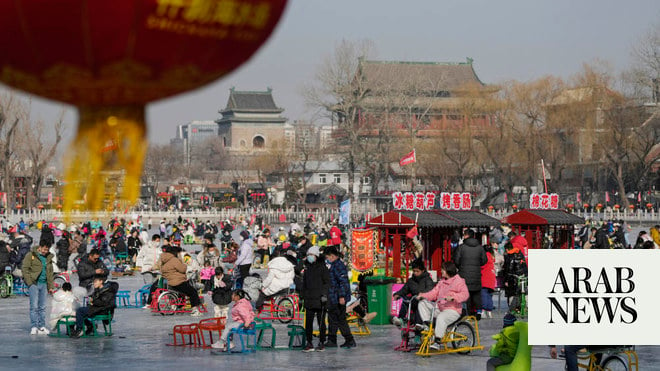
BEIJING: Southwest China’s Sichuan province will lift its three-child birth limit and remove restrictions on single parents as the world’s most populous nation faces a looming demographic crisis.
China’s population shrank last year for the first time in more than six decades, official data released this month showed, and the nation of 1.4 billion has seen birth rates plunge to record lows as its workforce ages.
China ended its strict “one-child policy” — imposed in the 1980s out of fears of overpopulation — in 2016 and began allowing couples to have three children in 2021.
But that has failed to reverse the demographic decline.
Faced with falling birth rates, authorities in Sichuan on Monday said they would remove the limit on the number of children a family can have and lift a ban on single women registering a birth.
The Sichuan Provincial Health Commission said the new rules would take effect on February 15.
Out-of-wedlock births are frowned upon in China, with the National Health Commission saying in 2017 that they were “against the public order and against good morals.”
The last time China’s population declined was in 1960, as the country battled the worst famine in its modern history, caused by the disastrous Mao Zedong agricultural policy known as the Great Leap Forward.
The population stood at around 1,411,750,000 at the end of 2022, Beijing’s National Bureau of Statistics (NBS) reported recently, a decrease of 850,000 from the end of the previous year.
Many point to the soaring cost of living — as well as a growing number of women in the workforce and seeking higher education — as being behind the slowdown.
Many local authorities have already launched measures to encourage couples to have children.
The southern megacity of Shenzhen, for example, now offers birth bonuses of up to 10,000 yuan (around $1,500) and pays allowances until the child is three years old











